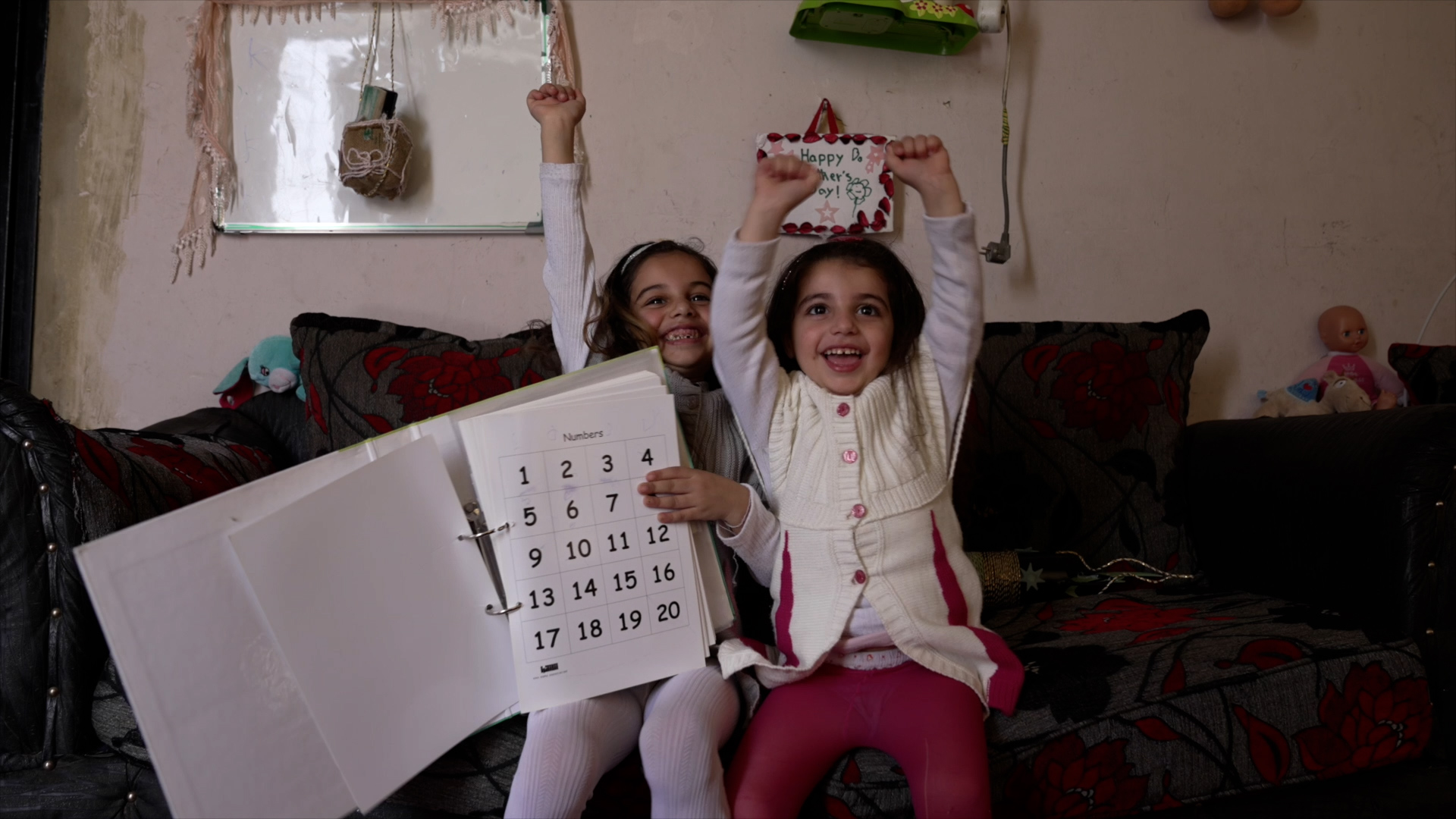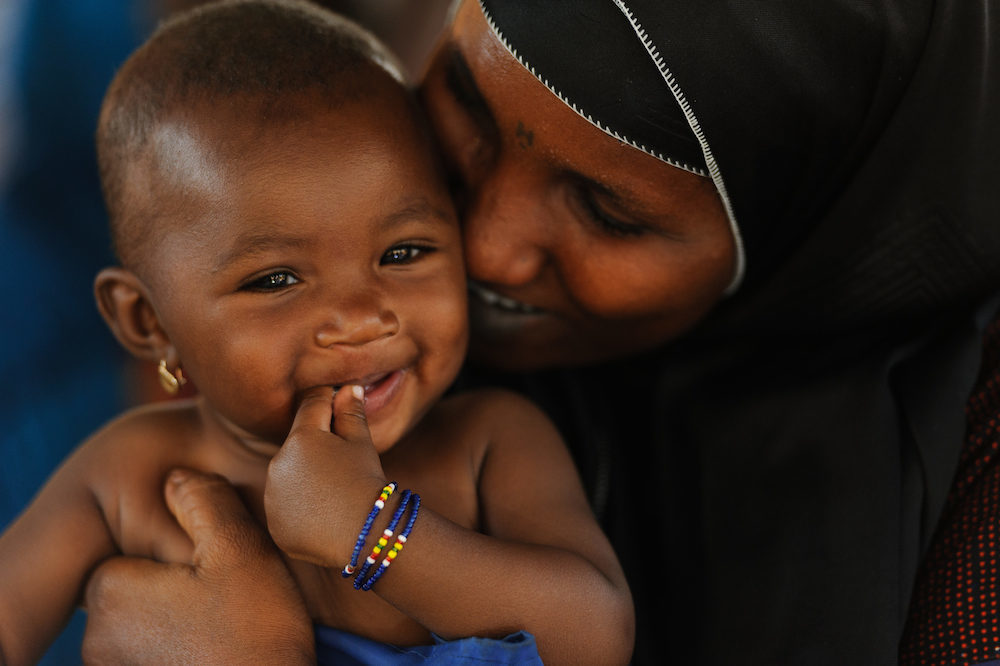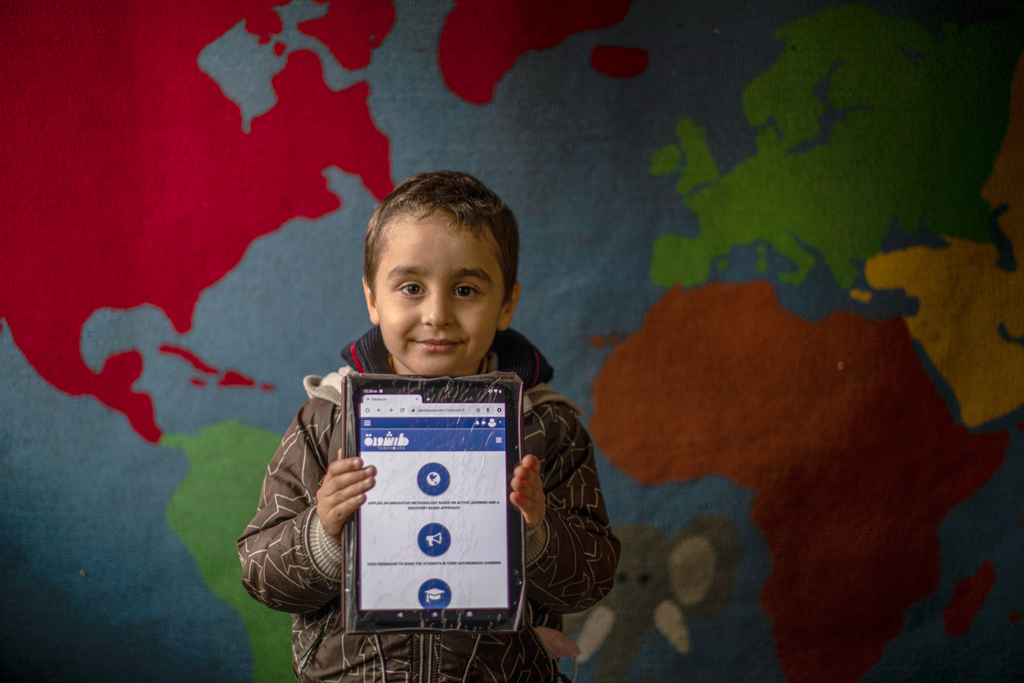
As a royal baby is born, what does the future look like for other newborns around the world?

Children in conflicts, Early childhood development
With Meghan and Harry celebrating the birth of son Archie, we look at some of the issues affecting infants and their long-term prospects.
Whether you’re rejoicing or not too interested, chances are you know a royal baby has been born. Well, you could hardly miss the media frenzy surrounding the happy news for Meghan and Harry.
The Duchess of Sussex – who gave birth to a “very healthy” boy they have named Archie – has already shown that she cares deeply about children.
As a charity ambassador, she visited girls’ education projects in India and Rwanda; she volunteered at an afterschool programme for underprivileged children in Los Angeles; and has listed “access to education” as a key cause since marrying Prince Harry.
While Archie Harrison Mountbatten-Windsor will have the very best start in life and a quality education, what is the outlook for other children born this week across the world? How likely are they to survive, be healthy, go to school and have opportunities to fulfil their potential?
The Duke and Duchess Of Sussex present the baby to the nation.. .
More images will be posted here.. .https://t.co/StJnh2upaQ pic.twitter.com/EuDPV3xww7
— Son Of Diana ???? (@One_True_Prince) May 8, 2019
About 360,000 children are born every day across the world. Half of them are in just eight countries – India, China, Nigeria, Pakistan, Indonesia, the United States, the Democratic Republic of Congo and Bangladesh.
Theirworld works to give children the best start in life – from pioneering research into premature babies and our call for investment in pre-primary education to our #WriteTheWrong campaign to get every child into school and receiving a quality education.
Here we look at some of the issues that affect newborn children and their prospects over the next few years.
Premature babies
Every year, 15 million babies are born prematurely before the 37th week of pregnancy – that’s more than one in 10 and the number is rising. Preterm birth puts them at higher risk of severe disabilities and a greater chance of delayed development of language and motor skills.
But things are improving – premature babies born in recent years are more likely to survive and less likely to have severe disabilities than those born in the mid-1990s.
Theirworld funds the work of the Jennifer Brown Research Laboratory at the University of Edinburgh, which is carrying out crucial and lifesaving work to discover the causes of babies being born early and finding better ways to care for them.
Through the Theirworld Edinburgh Birth Cohort, researchers from the laboratory are monitoring the progress of 400 premature babies to adulthood, to find new ways to prevent and treat brain injury in premature babies.
Infant mortality
The number of children dying before the age of five is at a new low – 5.6 million in 2016, compared with nearly 9.9 million in 2000. That means the lives of 50 million children have been saved.
Sub-Saharan Africa has the highest under-five mortality rate – with one child in 13 dying before their fifth birthday. Across Africa, 17% of children died before five in 1990. But by 2015 that had fallen to 8%.
Developing economies like India and Brazil now have much lower child mortality rates today than advanced economies had at similar income levels about a century ago. But some 15,000 children under the age of five still die every day – almost half of them in the first month after birth.
Babies born in Japan, Iceland and Singapore have the best chance at survival, while newborns in Pakistan, the Central African Republic and Afghanistan face the worst odds.
More than half of under-five deaths are due to diseases that are preventable and treatable through simple, affordable interventions. Strengthening health systems would save many young lives.
Life expectancy
The average life expectancy at birth of the global population in 2016 was 72 years (74.2 for females and 69.8 for males).
But there are big geographical differences. Across Africa, life expectancy is 61.2, while in Europe it’s 77. 5.
At current life expectancy rates, a child born in Nigeria today is likely to live to 55 and die in the year 2074. A child born in Denmark is likely to live until the 22nd century.
The good news is that life expectancy for children born now has increased dramatically. The global average rose by 5.5 years between 2000 and 2016, the fastest increase since the 1960s.
Health and stunted growth
In low and middle-income countries, extreme poverty means an estimated 250 million under-fives (43% of all young children in these countries) are at risk of poor development and stunted growth. That’s when a child fails to reach the expected height and weight for their age.
One-quarter of children under age five worldwide – 156 million children per year – show evidence of chronic malnutrition.
In Nigeria, 44 out of 100 children have stunted growth. In Afghanistan it’s 41, in India 38 and in South Sudan 31. In Brazil only six out of 100 have stunted growth and just two in 100 in the USA.
But the long-term implications for these children and their societies can be significantly prevented through investment in early childhood development. Many countries – such as Ivory Coast, El Salvador and Madagascar – are growing their nutrition programmes.
The World Bank pledged last year to increase its spending on nutrition to $1.7 billion by 2020 and over $1 billion was raised in November by the Global Financing Facility to support up to 50 countries with the greatest health and nutrition needs.
Children in conflicts and disasters
Around the world, over 85 million children under the age of seven have lived their entire lives amid war and chaos.
In conflict zones, the basic essentials for children’s healthy physical, mental and emotional growth are often lacking. Babies and young children risk psychological trauma, post-traumatic stress and inadequate cognitive development – and this can hinder their health, educational attainment and success for years to come.
Emergencies – including natural disasters – also put young children at risk of indirect physical harm, hunger, poor health care, inadequate shelter, lack of access to clean water and adequate sanitation, overcrowding, unsafe environments, neglect and displacement.
Serious or prolonged exposure in early childhood to high levels of stress from trauma, violence, abuse, neglect or deprivation – called “toxic stress” – can inhibit the healthy development of brain architecture, with potential lifelong repercussions.
For children under five, the risk of death and disease in emergency situations can be 20 times higher than normal. In crisis, children under five have the highest rates of any age group of both illness and death.
Other risk factors
There are many other factors that can hinder child development. 180 million children live in 37 countries where they are more likely to be in extreme poverty, be out of school or be victims of violent death than 20 years ago.
Children born in emergency situations, particularly those who are refugees, often don’t have birth certificates and can face lifelong problems in obtaining adequate health care, enrolling in school and may even be stateless.
Across developing countries, fewer than half of children under five have access to three or more books at home, limiting their development opportunities.
Air pollution is one of the leading threats to child health, accounting for almost one in 10 deaths in children under five years of age. Exposure to even low levels of pollution during the first 1,000 days can cause lasting damage to brains, lungs, reproductive organs and immune systems.
Child labour is still a massive problem but there has been progress. The number of child labourers has fallen by 94 million since 2000. The number of children in hazardous work fell by more than half over the same period.
Preschool education
90% of a child’s brain development happens before the age of five. But a severe lack of investment in early childhood education is putting millions of children at a disadvantage before they even start school.
Nearly half of all pre-primary-age children around the world are not enrolled in preschool. And just one in five children aged three to six in low-income countries attend preschool – compared with 86% in high-income countries.
Since the international community said in 2015 it wanted every child to have an early childhood education, aid fell by 27% – meaning an average spending of just 26 cents per child per year in the world’s poorest countries.
Theirworld’s report Leaving The Youngest Behind revealed that, in 2017, 16 of the top 25 donors to global education aid gave nothing or reduced their previous spending on pre-primary education.
Theirworld, UNICEF and others have been calling for much greater investment in pre-primary education. Our #WriteTheWrong campaign will mobilise over 1,000 youth campaigners, the business community and the public to draw greater attention to the importance of early education.
School education
There are 262 million children out of school – and the good news is that this figure has fallen from 380 million in 1998. But progress has stalled in recent years and more girls than boys are not in primary school.
Children born in the United Kingdom can expect to complete 13.9 years of school by the age of 18. In the United States that figure is 13.3 years.
In Brazil it drops to 11.7 years – and factoring in what children actually learn while in school the figure falls to just 7.6 years. In India children get 10.2 years of school and 5.8 years of actual learning, Afghanistan 8.6 and 4.9 and Nigeria 8.2 and 4.2. In South Sudan children get only 4.2 years of school and only 2.3 years of actual learning.
Last year, Theirworld’s Global Youth Ambassadors delivered messages from 1.5 million people who are backing a new global funding plan for education. They told Secretary-General António Guterres that action must be taken to launch the International Finance Facility for Education (IFFEd) – which can unlock an extra $10 billion of spending to help marginalised children get into school.
At the UN General Assembly in September, IFFEd won public support from world leaders, the business community and international donors. Crucially, it was backed by World Bank President Jim Yong Kim. Global leaders again expressed strong support for IFFED at the World Bank spring meeting last month.
Long-term prospects
A 20-year study of children in Jamaica showed that disadvantaged young children who received high-quality early stimulation interventions as infants and toddlers earned up to 25% higher wages as adults.
But the World Bank says 56% of children born today will lose over half their potential lifetime earnings because governments are not making effective investments in their people to ensure a healthy, educated and resilient population ready for the workplace of the future.
In 76 countries, an estimated 30% or more of young children are at risk of poor learning, inadequate education and reduced adult earnings.
There is a growing realisation that children will need much more than the basics of reading, writing and arithmetic to thrive in the future world of work. They will need to have problem-solving skills, critical thinking skills and be resilient to rapid change.
A report about helping young people to be ready for future employment – Preparing Tomorrow’s Workforce for the Fourth Industrial Revolution – was published in January by Deloitte Global and the Global Business Coalition for Education, a network of more than 150 companies.
Investment is the key
From talking to global leaders in world government to working with communities worldwide, Theirworld is campaigning to raise awareness that babies, toddlers and young children all over the world are not getting the best start in life.
World Bank experts said in 2016 that money spent on early childhood development is “the smartest investment a country can make … If a child gets the healthcare, nutrition, affection, stimulation, and education that she needs – the gains she makes in those early years are hers for life.”
Our 2017 report Bright and Early said: “While progress is being made in some areas, children’s early learning is too often neglected, putting millions of children at a disadvantage before they even start school.
“Supporting early learning is the best investment a government can make – for the child and the country. Every $1 invested in early childhood care and education can lead to a return of as much as $17 for the most disadvantaged children.”
Theirworld has been calling on all countries to invest more heavily in early childhood development and to spend at least 10% of their total education budget on pre-primary schooling. We also want international donors to allocate 10% of their total education funding to pre-primary education.
Sources: United Nations, World Bank, WHO, UNICEF, Nurturing Care Framework, International Labour Organization, Bernard van Leer Foundation, Theirworld reports.
Theirworld’s work on early childhood development is supported by the Conrad N. Hilton Foundation.
More news

